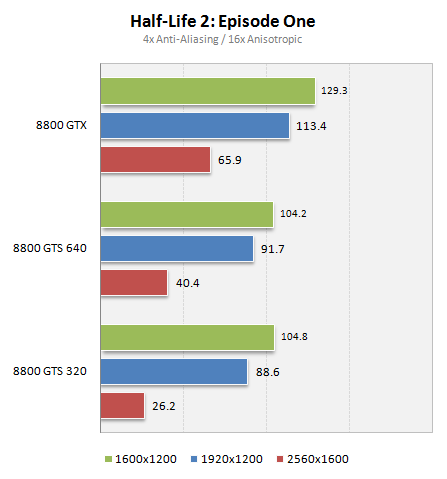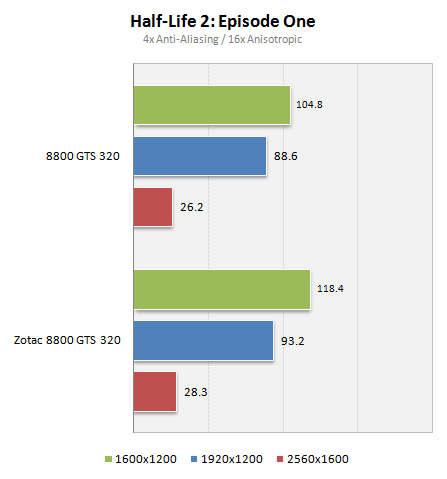Stock Performance

When we look to see where memory pressure manifests as a performance loss for the GTS 320MiB, we see it happens at the upper resolution. Maintaining rendering resources in board memory when drawing 4MP frames, especially if the renderer makes use of screen-size rendertargets for post-processing, can consume more than the physical memory size of the usual 256MiB boards, and here at 320MiB too.
At 1920x1200 -- the size of most 24 (and newer 27) inch LCD display panels and a definite resolution target for 8800-range GeForce hardware -- we can see that the GTS 320MiB product managed to push out an average framerate within a few percent of the 640MiB version.
Zotac Overclocked Performance

Versus the stock GTS 320MiB performance, the Zotac's boosted clocks allow it some significant extra performance (without an increase in the shader core frequency remember) in Half-Life 2, performance which eclipses the 640MiB GTS in this game at 1920x1200, but not at 2560x1600 where memory pressure still applies.
